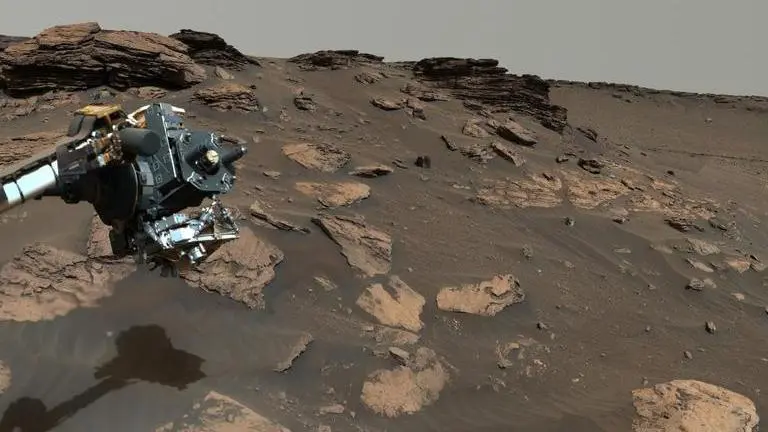Updated 16 September 2022 at 16:54 IST
Perseverance rover's discovery of most organically abundant rocks on Mars delights NASA
The Perseverance rover has scooped new rock samples on Mars which are the most organically-abundant one ever discovered, revealed NASA.
- Science News
- 2 min read

The Perseverance rover, while scouting the Jezero crater on Mars, has discovered the most organically rich samples of rocks to date. Organic matter is composed mainly of carbon molecules along with traces of oxygen and hydrogen as well as elements such as nitrogen, phosphorus, and sulfur. While the organic molecules are considered biosignature for life, they can also form in an environment where life might not have existed.
The @NASAPersevere rover found the most intriguing samples yet that could tell us if life once existed on the Red Planet - but scientists on Earth need to analyze the samples to know for sure. The Mars Sample Return campaign will help us solve the mystery. https://t.co/DjgfkLsapA pic.twitter.com/WLgt7bl7Pi
— NASA JPL (@NASAJPL) September 15, 2022
However, NASA scientists are still excited because the latest detection has been made in an area where sediment and salts were deposited into a lake under conditions in which life could potentially have existed.
Perseverance gets closer to finding signs of life
The discovery has been made in a location that scientists have long considered a hotspot for finding signs of ancient Martian life. Ever since Perseverance’s landing on the 45-km-wide Jezero crater in February last year, it has collected 12 rock samples out of which four are from an ancient river delta.
During its latest sampling, the rover carved out an outcrop called the ‘wildcat ridge’, a rock about 3 feet (1 meter) wide. According to NASA, it likely formed billions of years ago as mud and fine sand settled in an evaporating saltwater lake. For the sampling process, Perseverance extracted two rock cores and abraded a circular patch to investigate the rock’s composition using its SHERLOC (Scanning Habitable Environments with Raman & Luminescence for Organics & Chemicals) instrument.
Advertisement
In #SamplingMars, I’m building a real science treasure chest, and my latest samples may be the most valuable yet. Some have organic molecules – but from ancient biology, or another process? Sending them back to Earth could help us figure it out.
— NASA's Perseverance Mars Rover (@NASAPersevere) September 15, 2022
More: https://t.co/sn5Wh9fRnG pic.twitter.com/GfMaXPrYnd
After analysing the data gathered from SHERLOC, the scientists concluded that the samples feature a class of organic molecules that are spatially correlated with those of sulfate minerals. They believe that the sulfate minerals in the sedimentary rocks carry a treasure trove of information about the aqueous environment they were formed in.
“We picked the Jezero Crater for Perseverance to explore because we thought it had the best chance of providing scientifically excellent samples – and now we know we sent the rover to the right location,” Thomas Zurbuchen, NASA’s associate administrator for science said in a statement. “These first two science campaigns have yielded an amazing diversity of samples to bring back to Earth by the Mars Sample Return Campaign”, he added.
Advertisement
The Sample Return Campaign is the mission of NASA and the European Space Agency (ESA) to bring back samples from Mars next decade for a more detailed investigation of the Martian rocks and soil. Read all about it here.
Published By : Harsh Vardhan
Published On: 16 September 2022 at 16:54 IST
